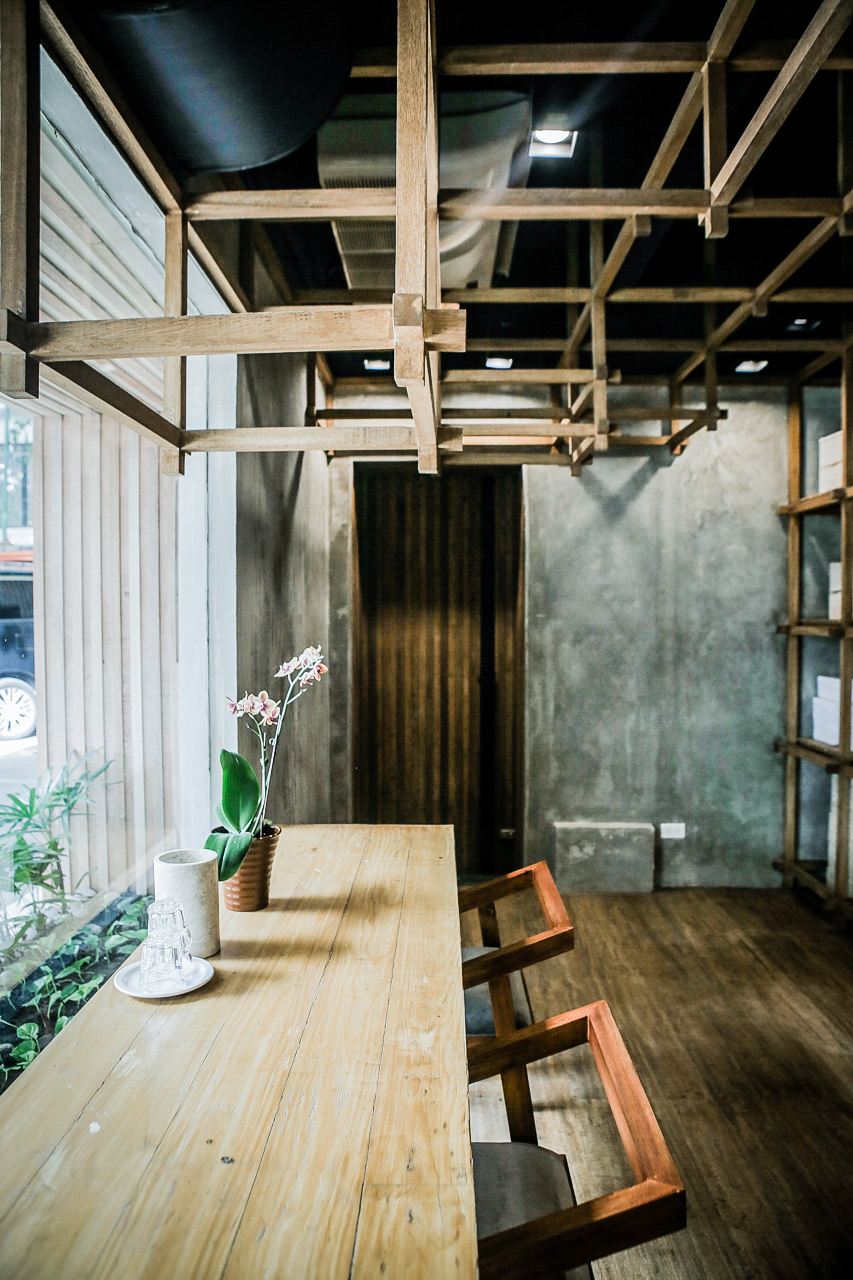Food is the reason why we dine in certain restaurants. But before the palate, a restaurant indulges the rest of the senses first.
Take Jordy Navarra’s Panaderya Toyo for example. Before you taste his innovative knotted pandesal, the powerful scent of bread greets your nose right upon entrance. Beneath your feet, you feel the scattered particles of flour on the wooden floor. Then, you’ll notice the wooden cube-like forms above leading your gaze towards the open counter where baker Richie Manapat is probably kneading dough.
After all these, that’s when you get up close to a loaf of bread. The chef creates for the palate but a designer, like architect Arts Serrano, orchestrates a sensory experience beyond the food.
Uplifting experiences through interiors

Panaderya is one of the first restaurants Serrano, principal architect of Escolta-based One/Zero Design Collective, has designed. With a background in creating residential spaces and community masterplans, Serrano sees designing dining spaces as a means of bringing people together and creating communities. But it’s also about making a space conducive for both cooking and eating. “Architecture reflects the activities of people,” Serrano says.
In the case of Panaderya, the design aims to connect diners with the process of breadmaking. Serrano utilized the ceiling and wooden cube-like form installed to the ceiling to lead people to the breadmaking area and the bread display. It gets closer to the ceiling to create open, breathable spaces where diners could walk freely.
Design also aims to evoke a certain emotion. Navarra’s directive to Serrano was to create a space that will remind diners of “home having pandesal with family.” Serrano says the scent of bread immediately taps a happy memory, but he further highlighted this with the use of wood. “We like to use wood because it’s warm,” Serrano explains. This quality of the material invites diners to stay longer.
Arts Serrano sees designing dining spaces as a means of bringing people together and creating communities. But it’s also about making a space conducive for both cooking and eating. “Architecture reflects the activities of people,” he says.
Wood doesn’t just allow the space to evoke the mood. It also enables Serrano to make unique spaces through original and specific furniture. “In any space that we do, we try to create a cohesive look,” Serrano says.
At Half Saints in Quezon City, the design relies on lines. The ceiling showcases an architectural knit installation, which is formed to lead the diners’ vision to the kitchen. This is where Serrano culled the eccentric jagged cut of the tables.
In both restaurants, most of the furnishings have an unfinished quality. “We want the materials we use to be truthful to what it represents in the same way Christine [Roque of Half Saints] and Jordy are honest with their process,” Serrano explains.
Instagrammability doesn’t define good design

The word “Instagrammable” is thrown around in conversations today. The word bears a hefty proposition when placed in an article headline. In this age, the social media platform is also where people first find out about new restaurants. And unfortunately, this is what defines many restaurants today. But design is not just mere vanity; it’s about telling a story.
“It’s about translating their story into a tactile version through the space,” Serrano says. “It’s very intangible. The design can only do so much. Design is only a small part of it. I look at spaces and I always try to think of how it’s best for us as designers to tell the story. With any space any designer would do, a project can have impact only if it tells the story cohesively in terms of architecture, furniture design, and the overall design of the space.”
Design is the restaurant’s invitation to diners. A well-crafted space could entice any meticulous diner but it should not be the lone factor that defines a restaurant. A great dining experience is a result of collaboration.
As Serrano says, design is just a small part of it.





